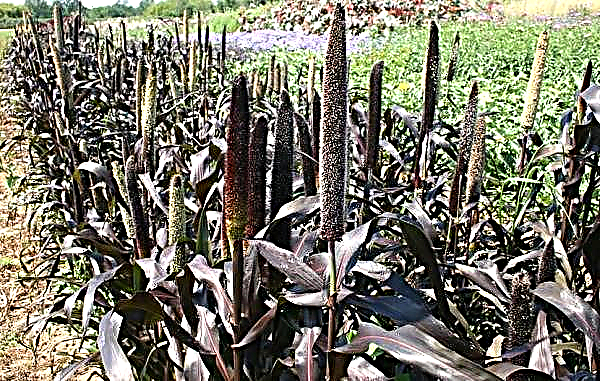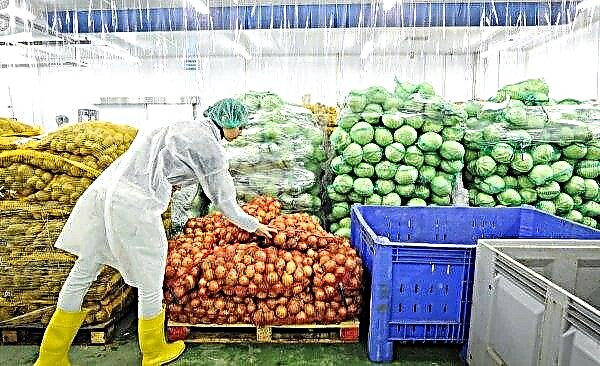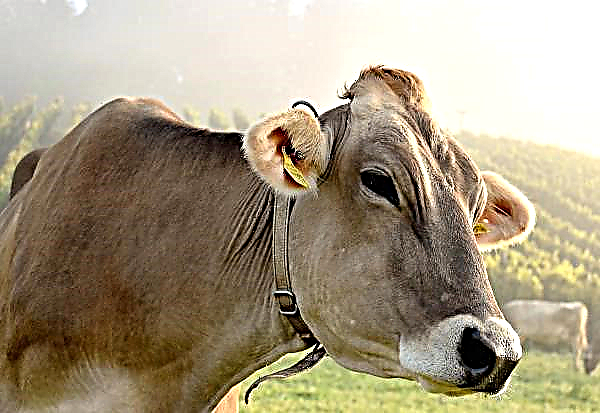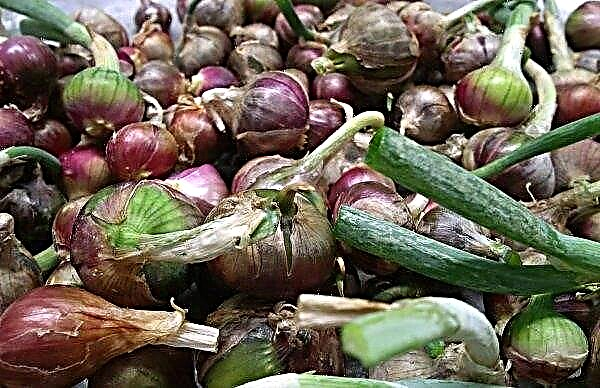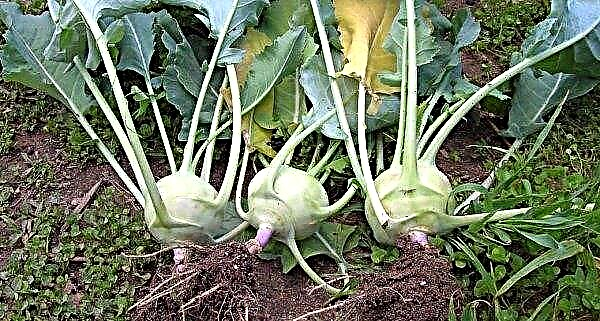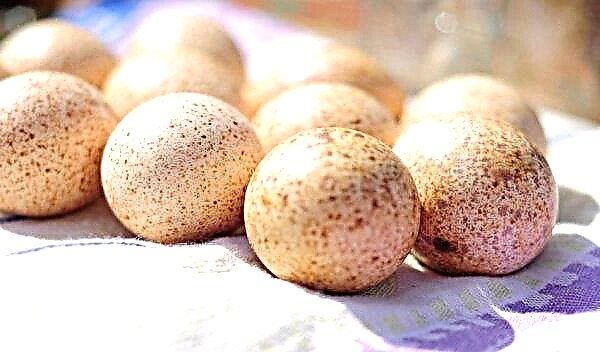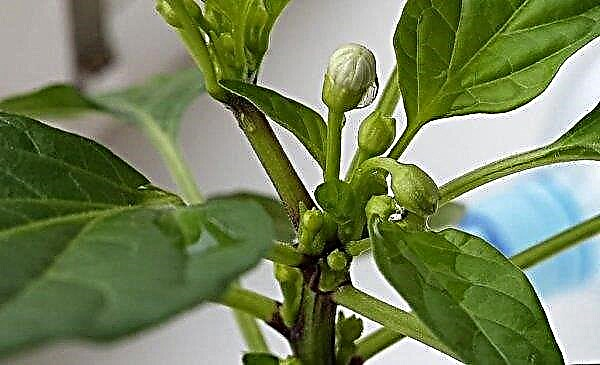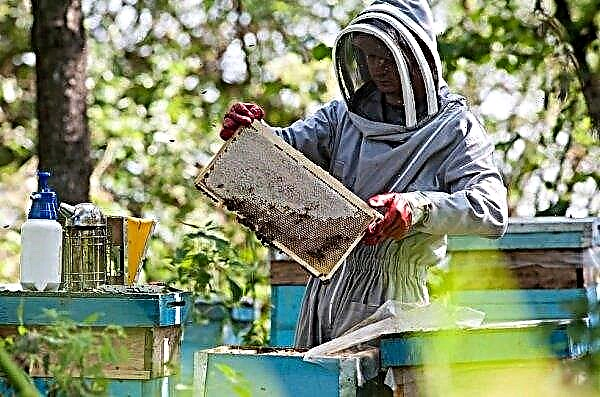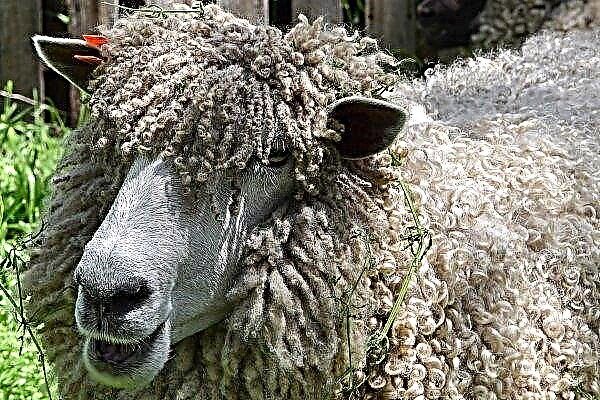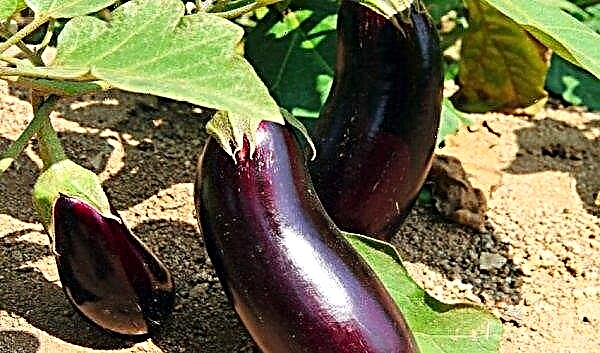Breeding turkey meat breeds requires a lot of work and attention - since turkey poultry are prone to colds and infections, their diet must be properly selected and prepared, their condition must be monitored. Hybrid breeds that are not suitable for walking require special houses with artificial lighting and constant temperature. Bronze turkeys are great for breeding for slaughter and relatively unpretentious, but their content also has its own characteristics.
Breeds of bronze turkeys
Bronze turkeys are a foreign breed that our farms have known and loved for many years. In addition to their luxurious appearance, they also have high economic value. Moreover, this variety includes several different breeds, and each breeder will be able to choose a breed to his taste.
Broad chest
The largest bronze turkeys are broad-chested, or American. They appeared in the USA as a result of experiments on crossing wild American turkeys and the Norfolk breed of domestic turkeys. They are mainly used to create crosses of high productivity, and they are very successful in this task. In many farmsteads this breed has already superseded simple turkeys. The only caveat - this bird is not adapted to the pasture lifestyle and must be kept in pens.
Did you know? There is a theory regarding the appointment of grooves on the head of a turkey, expressed by a famous biologist, Professor Manteuffel. It consists in the fact that these furrows capture UV rays and poultry thus receives the right dose of sunlight.
Appearance:
- bronze feathers with a metallic sheen are located on the neck;
- the chest has a shade of dark bronze;
- the head is bald and has growths, also a warty growth is located above the beak;
- feathers on the case are black, casting bronze;
- the shoulders in the sun are cast in green;
- wings are dark brown in color, each feather has a dirty white transverse strip;
- tail is black, has brown stripes and a wide border at the end (white or black);
- massive physique, strong legs;
- young individuals have black legs; by age they turn pink or acquire a flesh tint.

- The main advantages of the breed:
- high egg production;
- excellent heredity, that is, genetically the characteristics of the breed are transmitted qualitatively;
- strong immunity, high adaptability to external factors.
- This breed has its disadvantages:
- not made for walking;
- gaining weight more heavily than modern meat breeds.
Productivity of broad-breasted turkeys:
| Bird age | Weight |
| 3 months | up to 4.5 kg |
| 4 months | up to 6.6 kg |
| adult turkey | up to 11 kg |
| adult turkey | up to 20 kg |
French (Bronze 708)
The earliest turkey belongs to this breed: in record time, it gains weight up to 30 kg. The breed was bred by selection based on the British bronze variety of turkey. This is a cross, that is, a hybrid obtained by crossing different breeds. The first minus follows from this - turkeys cannot reproduce themselves with the same set of characteristics as their own.
Important! Remember that a bronze turkey gains maximum weight with proper care only in an industrial environment. It provides for an artificial microclimate and balanced compound feeds, which is impossible to achieve in simple farming.
Appearance:
- brown back and chest with a bronze tint;
- the head is devoid of plumage, characteristic grooves are present;
- paws wide apart;
- in females, feathers have white inserts along the entire tail;
- males have black transverse stripes on the tail and back, the tail itself has the shape of a fan.

Bronze Productivity 708:
| Bird age | Weight |
| 6 months (female) | 10 kg |
| 6 months (male) | 15 kg |
| 1 year (female) | 15–20 kg |
| 1 year (male) | 20-30 kg |
North Caucasian
As the name suggests, this breed was bred in Russia in an attempt to adapt the American turkey to local conditions. Crossings were carried out between the bronze broad-chested and those local turkeys, which also have a bronze tint in the plumage. The main goals pursued by breeders are early maturity and massiveness of birds. In the 60s of the last century, experiments were successful and the breed received official registration, and then spread to southern Russia and Central Asia.
Appearance:
- the body is large, massive chest (but smaller than that of broad-chested);
- wide back;
- wings and tail are very long;
- legs are strong, have a pinkish or red color;
- head growths of red color; if the bird is agitated, it may turn purple;
- the plumage is almost identical to the broad-chested look, only the body has a brighter golden-green tint, while the tail remains dull.
Did you know? The turkeys adhere to the principle “no one is lying”, so if in a fight one of the turkeys lays down and cranes his neck, he will no longer be touched.
- The clear advantages of the breed include:
- high productivity and fast mass gain;
- the possibility of grazing;
- the strongest immunity among all breeds;
- good adaptability to the Russian climate;
- unpretentiousness in food.
Less experienced breeders distinguish only one: unlike heavyweight crosses, North Caucasian turkeys are gaining less weight.

Productivity of the North Caucasian breed:
| Bird age | Weight |
| 4 months | 4-5 kg |
| 8.5 months (puberty) | 7 kg (turkeys) 12.5 kg (turkeys) |
| adult turkey | 8 kg |
| adult turkey | 18 kg |
Advantages and disadvantages
- The main advantages of bronze turkeys:
- fast mass gain (in industrial conditions it can reach record levels);
- stably strong immunity;
- the ability to choose a diet (between simple food and animal feed);
- good chick survival;
- beautiful appearance.
- Disadvantages are also available:
- bulk bronze turkeys are not pasture birds and are kept only indoors;
- inferior in characteristics to more modern crosses.
Breeding Bronze Turkeys
Puberty in all bronze breeds occurs at about the same time - in 8–8.5 months, subject to carefully thought-out care and good nutrition. In the conditions of small farms and with moderate nutrition, these periods can move a month later - by 9–10. The eggs are fertilized well, in 90% of cases the process is successful; while chickens appear in about 70% of cases. In the case of systematic fattening of turkeys, there is a risk of female injuries in the process of insemination; therefore, turkeys per tribe are selected in advance and maintained in average weight. 5 turkeys are enough for a herd of 40 turkeys, artificial insemination is also possible. It takes 28 days for turkeys to appear.
In the case of systematic fattening of turkeys, there is a risk of female injuries in the process of insemination; therefore, turkeys per tribe are selected in advance and maintained in average weight. 5 turkeys are enough for a herd of 40 turkeys, artificial insemination is also possible. It takes 28 days for turkeys to appear.
Freshly hatched chicks are kept warm, at a temperature of 31–33 ° C, with constantly turned on light up to three days of age. Then young growth is gradually accustomed to natural light, and the temperature is reduced to 17–19 ° С. From a weekly age, turkey poults should receive feed, and only after reaching a month of age can they be transferred to grain, if necessary.
Turkey requirements
It is necessary to approach the arrangement of the house thoroughly, since some breeds of bronze turkeys, as mentioned above, are not intended for walking. Basic requirements for the premises:
- temperature not lower than 17 ° С; you can use artificial heating;
- lack of moisture - it is best to fill in a new concrete floor so that there are no cracks, and cover it with hay, straw or peat;
- good airing;
- adequate lighting; The daily norm of light for turkeys is 14 hours, so in the cold season you will have to take care of artificial lighting.
 In addition to feeders and drinking bowls, it is necessary to arrange perches for birds. The length of the perch on two adult turkeys is about 1 meter, with a closer placement, conflicts and fights can occur, which will negatively affect the productivity of the whole herd. The house is also equipped with nests for females.
In addition to feeders and drinking bowls, it is necessary to arrange perches for birds. The length of the perch on two adult turkeys is about 1 meter, with a closer placement, conflicts and fights can occur, which will negatively affect the productivity of the whole herd. The house is also equipped with nests for females.Important! It is necessary to monitor the behavior of birds and respond in time to stressful situations.
Containers for food and water, as well as bedding, are kept clean and dry. All this is cleaned and disinfected at least once a week.
Food and drink
Intensive cultivation involves a well-thought-out diet and a balanced diet, so when breeding bronze turkeys industrial feeds with vitamin supplements, protein, minerals, amino acids and antibiotics are used (as a prophylaxis of infectious diseases). These feeds can accelerate growth and weight gain. If the bird is bred on a personal plot for their own needs, then it is quite possible to get along with mixtures of different grains, and wet food. For example, fresh or boiled vegetables, juicy grass. Turkeys have three meals a day, while wet food is given in the morning, and coarse (grain) - closer to the evening. The approximate composition of grain mixtures:
If the bird is bred on a personal plot for their own needs, then it is quite possible to get along with mixtures of different grains, and wet food. For example, fresh or boiled vegetables, juicy grass. Turkeys have three meals a day, while wet food is given in the morning, and coarse (grain) - closer to the evening. The approximate composition of grain mixtures:
- 15% barley, 20% wheat and 30% corn;
- about 5% peas or meal; alfalfa herbal flour can be used;
- 5.5% bran from wheat grain;
- 4% yeast;
- 3% of mineral additives (chalk, shell, bone meal);
- 2% fishmeal;
- about 0.5% salt.
Important! Turkeys need vaccination against diseases that are common in the region of their breeding. Mandatory consultation of a veterinarian.
Water needs to be changed regularly - if possible, flow-through drinking bowls are equipped.
What and how to feed turkey poults
Freshly hatched chicks are very fragile, with soft beaks and almost blind. In the first hours they are given sweetened water or water with vitamin C dissolved in it (concentrate from ampoules). After 12 hours, turkey poults receive their first food: a mashed boiled egg with cornmeal. Such a diet can be maintained for a week. The feed is placed on thick paper and tapped lightly on it, attracting the kids. You can also, and preferably, give pureed skimmed cottage cheese. Onion feathers give on the second day of life, they are useful for small ventricles. Weekly chicks are already completely independent, they run, eat themselves and even know when they will be fed. Since that time, mineral additives (not more than 2% of the total mass) are introduced into the wet food, this is chalk or shell rock.
You can also, and preferably, give pureed skimmed cottage cheese. Onion feathers give on the second day of life, they are useful for small ventricles. Weekly chicks are already completely independent, they run, eat themselves and even know when they will be fed. Since that time, mineral additives (not more than 2% of the total mass) are introduced into the wet food, this is chalk or shell rock.
The crushed grass is mixed into the feed and given separately, accustoming turkey poults to it. From this time, you can switch to compound feed, which is necessarily small so that it does not clog the beaks. To make sure that the feeding is correct, the goiter is selectively checked in young animals. If it is empty in the morning and full in the evening, then everything is in order. On day 11, bone meal is introduced into the diet. With proper nutrition, by the month of a month, turkeys will weigh 2 kg.
Important! Any new product is introduced gradually, in small quantities.
It is also recommended once a week to breed potassium permanganate to a pale pink color and drink it with babies. Chicks must have access to clean drinking water. It is advisable to defend it before giving turkeys. Drinking bowls must be selected closed, with dosed access, or automatic, so that the chicks do not fall into them and get wet. Poultry more than other chicks are afraid of colds and, getting wet, may not survive.
1 month
From the age of one month, feeding is already three times a day. Since broiler breeds are inactive and do not go to pasture, more frequent feeding can lead to obesity. From this age in the diet appears cereal feed, which is given in the evening. The morning mash is already half full of greens, and table salt is added to the feed (0.5% portion).
2 months
From 2 months, granulated corn and bran are gradually introduced into an existing diet. This food gradually becomes mainstream until the time of slaughter, because it helps turkeys to quickly and accurately gain weight. For these purposes, they also give not just grain, but sprouted. Potato peelings can be boiled and added to the mixers.
Important! In no case should water get from the potato, it is poisonous to birds.
If the bird ate high-protein mixed feed, then from just 2 months the amount of this supplement can be gradually reduced.
3 months
The main food is corn (until the end of the third month) and bran (20 g per head), fresh grass (alfalfa, clover, nettle, plantain). The amount of wheat and barley groats per turkey by 3 months is already 35 g each. Also, oats are added to the diet (10–25 g per head). If you are going to breed bronze crosses, you need to clearly formulate tasks and plan the final result. It is important to remember that these breeds are not so much for productive egg production as for slaughter for meat. Providing birds with quality feed and creating suitable conditions, you get excellent broilers.
If you are going to breed bronze crosses, you need to clearly formulate tasks and plan the final result. It is important to remember that these breeds are not so much for productive egg production as for slaughter for meat. Providing birds with quality feed and creating suitable conditions, you get excellent broilers.

